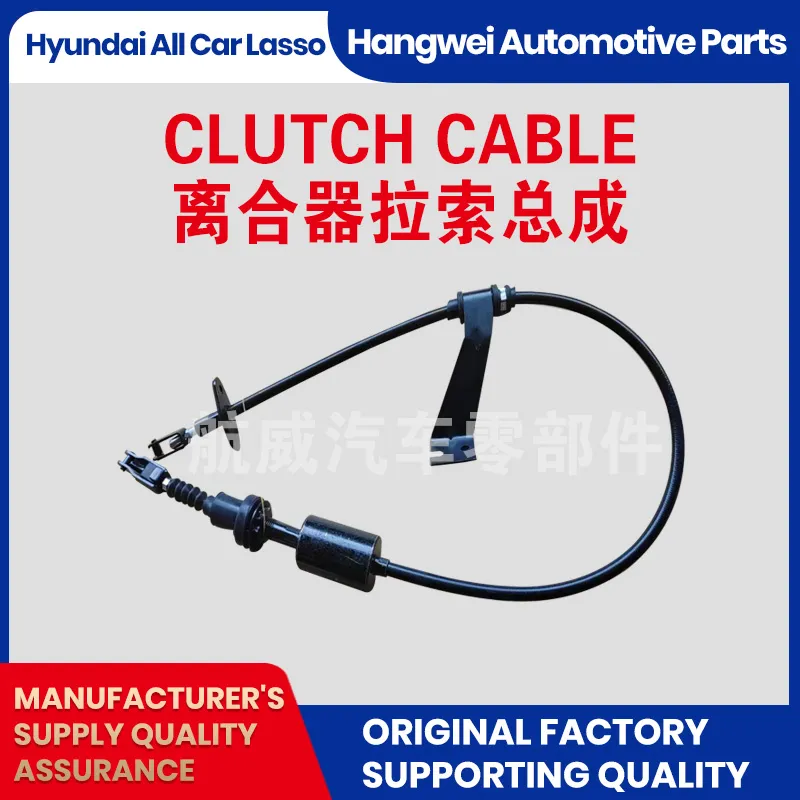Durable Stainless Steel Clutch Line for Enhanced Performance and Reliability
Understanding the Importance of Stainless Steel Clutch Lines
In the world of automotive engineering, every component plays a critical role in the overall performance of a vehicle. Among these components, the clutch system is integral to the functionality of manual transmission vehicles. One often overlooked yet essential aspect of this system is the clutch line. With the advent of advanced materials, stainless steel clutch lines have emerged as a superior choice, offering numerous benefits over traditional rubber lines. In this article, we will delve into the significance of stainless steel clutch lines, their advantages, and why they are becoming a preferred option for car enthusiasts and manufacturers alike.
The Role of Clutch Lines
A clutch line, or clutch hydraulic line, is a crucial part of the vehicle’s clutch system that connects the master cylinder to the slave cylinder. When the driver presses the clutch pedal, hydraulic fluid is sent through this line, enabling the engagement and disengagement of the clutch. This connection is vital for smooth gear shifting and vehicle control.
Traditional clutch lines are typically made from rubber or other flexible materials. While these materials can perform the job adequately, they are prone to wear and tear, especially under high pressure and extreme temperature conditions. This can lead to issues such as fluid leaks, reduced responsiveness, and even complete system failure.
Why Stainless Steel?
Stainless steel clutch lines offer a compelling alternative to rubber lines. Constructed from durable stainless steel, these lines are designed to withstand the rigors of automotive applications. Let’s explore the key advantages of using stainless steel for clutch lines
stainless clutch line

1. Durability and Longevity Stainless steel is known for its exceptional strength and resistance to corrosion. Unlike rubber, which can degrade over time due to extreme temperatures and exposure to fluids, stainless steel maintains its structural integrity, ensuring a longer lifespan for the clutch line. This durability translates into less frequent replacements and reduced maintenance costs.
2. Enhanced Performance The rigidity of stainless steel lines minimizes expansion under pressure, which is a common issue with rubber lines. As a result, stainless steel clutch lines provide a more consistent and responsive feel to the driver. This means quicker engagement and disengagement of the clutch, leading to smoother gear changes, especially during high-performance driving or racing.
3. Resistance to Heat and Pressure In high-performance applications, such as racing or heavy-duty driving, clutch lines are subjected to extreme heat and pressure. Stainless steel lines can handle these conditions without compromising performance, whereas rubber lines may swell, weaken, or even burst.
4. Aesthetic Appeal Apart from functionality, stainless steel clutch lines add a modern touch to the engine bay. Their sleek, polished look gives a professional appearance that car enthusiasts appreciate. Customization options are also available, allowing for various finishes and designs that can complement a vehicle’s aesthetic.
5. Simplicity of Installation Many stainless steel clutch line kits are designed for easy installation. They come with pre-fitted ends and hardware, making it easier for both professionals and DIY enthusiasts to upgrade their clutch system without extensive modifications.
Conclusion
In conclusion, stainless steel clutch lines represent a significant advancement in automotive design and engineering. Their superior durability, enhanced performance, and aesthetic appeal make them an excellent investment for anyone looking to improve their vehicle's clutch system. While traditional rubber lines may still suffice for everyday driving, those seeking reliability and performance will find that stainless steel clutch lines are a worthwhile upgrade. As the automotive industry continues to evolve, it is clear that the shift towards high-quality materials like stainless steel is paving the way for improved vehicle performance and safety.
-
Workings of Clutch Pipe and Hose SystemsNewsJun.04,2025
-
The Inner Workings of Hand Brake Cable SystemsNewsJun.04,2025
-
The Secrets of Throttle and Accelerator CablesNewsJun.04,2025
-
The Hidden Lifeline of Your Transmission Gear Shift CablesNewsJun.04,2025
-
Demystifying Gear Cables and Shift LinkagesNewsJun.04,2025
-
Decoding Clutch Line Systems A Comprehensive GuideNewsJun.04,2025
